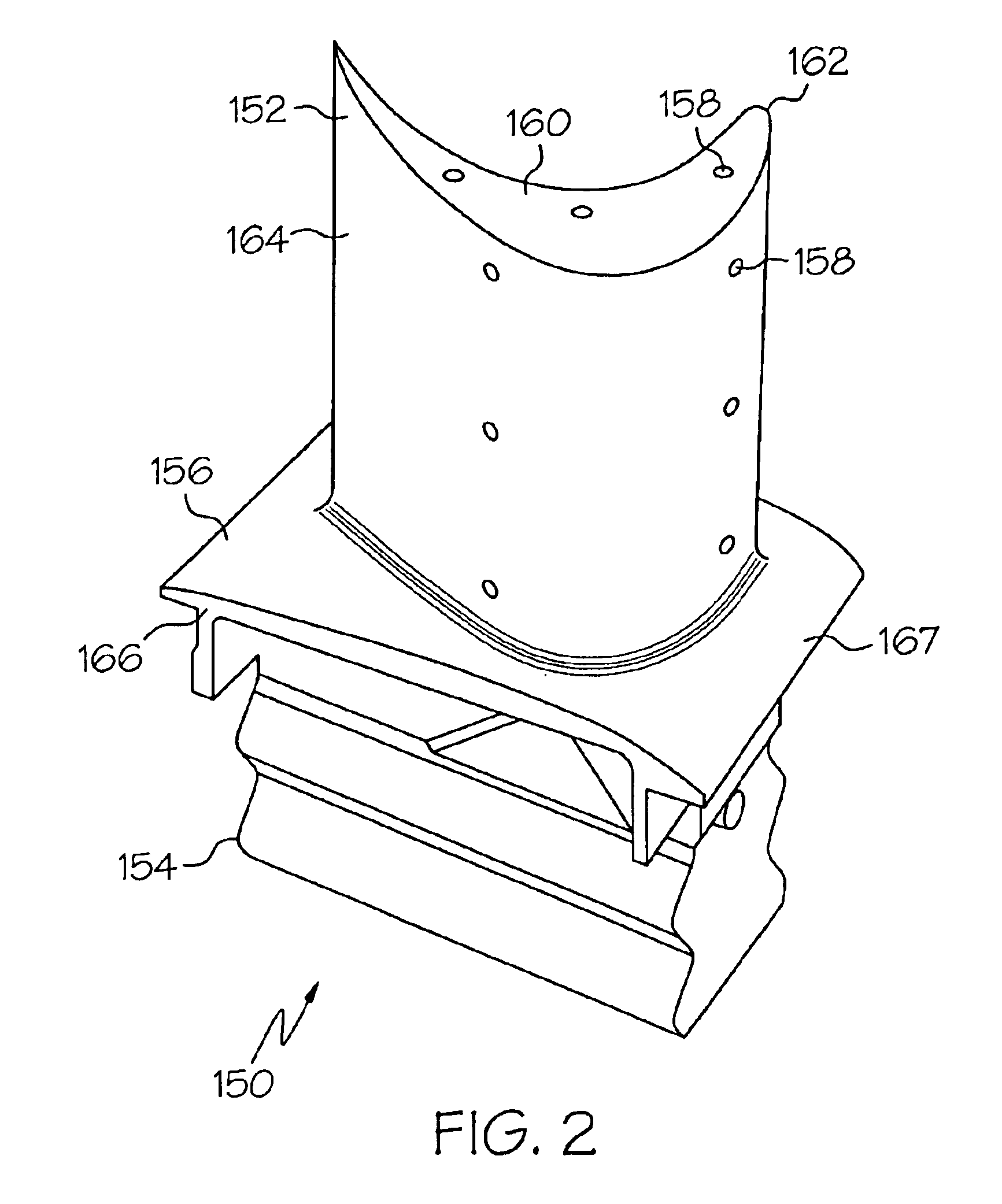Cold gas-dynamic spray repair on gas turbine engine components
a gas turbine engine and cold gas technology, applied in the field of turbine engine components, can solve the problems of high rejection rate, costly rework, and difficult application of superalloy materials using more conventional techniques, and achieve the effects of easy welding, high strength, and easy application
- Summary
- Abstract
- Description
- Claims
- Application Information
AI Technical Summary
Benefits of technology
Problems solved by technology
Method used
Image
Examples
Embodiment Construction
[0017]The present invention provides an improved method for repairing high pressure turbine (HPT) components such as turbine blades. The method utilizes a cold gas-dynamic spray technique to apply high-strength superalloy materials to the worn surface of turbine engine components. These materials can be used to repair degraded components such as blades and vanes caused by erosion, oxidation, corrosion, thermal fatigue cracks and foreign object damage to name several examples.
[0018]Turning now to FIG. 1, an exemplary cold gas-dynamic spray system 100 is illustrated schematically. The cold gas-dynamic spray system 100 is a simplified example of a type of system that can be used to repair turbine components. Those skilled in the art will recognize that most typical implementations of cold gas-dynamic spray systems would include additional features and components. The cold-gas-dynamic spray system 100 includes a powder feeder for providing repair powder materials, a carrier gas supply (...
PUM
| Property | Measurement | Unit |
|---|---|---|
| Time | aaaaa | aaaaa |
| Time | aaaaa | aaaaa |
| Time | aaaaa | aaaaa |
Abstract
Description
Claims
Application Information
 Login to View More
Login to View More - R&D
- Intellectual Property
- Life Sciences
- Materials
- Tech Scout
- Unparalleled Data Quality
- Higher Quality Content
- 60% Fewer Hallucinations
Browse by: Latest US Patents, China's latest patents, Technical Efficacy Thesaurus, Application Domain, Technology Topic, Popular Technical Reports.
© 2025 PatSnap. All rights reserved.Legal|Privacy policy|Modern Slavery Act Transparency Statement|Sitemap|About US| Contact US: help@patsnap.com



